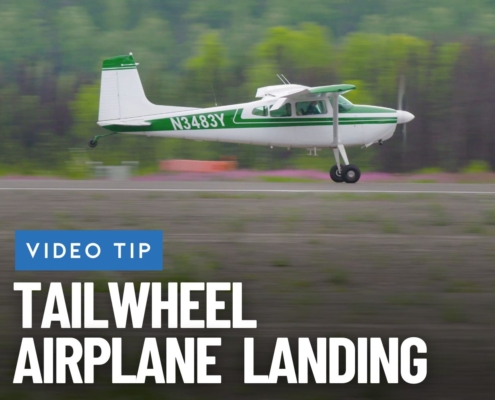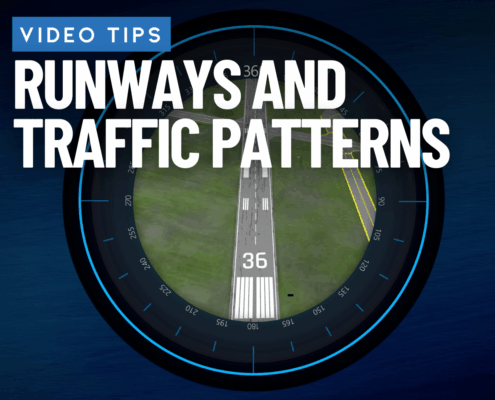
Video Tip: How to land a tailwheel airplane (wheel landing method)
/
0 Comments
While flying a tailwheel airplane is not much different than a traditional nosewheel airplane in the air, taking off and landing are a different story. This week's tip takes a look at what it takes to properly land a tailwheel airplane using the "wheel method".

Video Tip: Class B Airspace
Class B airspace surrounds the busiest airports, which means there are some important restrictions to remember any time you're operating within it - or underneath it. In this week's video tip, we review how Class B airspace works, what you need to do to fly legally in it and how to stay safe. Take a few minutes and get current today.

Video Tip: Starting the Airplane Engine
Starting the airplane engine is one of the first hands-on procedures you'll learn when starting your flight training. In our latest video tip, we'll show you step-by-step the procedure for starting the Cessna 172S fuel-injected engine.

Video tip – how to use aviation self-serve fuel facilities
Many airports offer a self-serve fuel option at a cheaper price per gallon, which can offer big savings for large fillups and serve as a plan B for fuel when landing after hours when the FBO is closed. This week's tip takes a look at how to operate a self-serve fuel system to ensure that your first time using one goes smoothly.

Video Tip: Six Rules for VFR Cross-Country Flights
Getting out of the traffic pattern and going on a real trip is a lot of fun. It may even be the reason you’re learning to fly in the first place. But the same reasons these trips are so much fun - new places to see, a goal at the end of the flight - can lead to challenges if you aren’t prepared. Here are six rules to keep in mind when you’re flying VFR cross countries.

Video Tip: Cessna 172 Electrical System
The electrical system is a critical component of today's modern airplanes, distributing and supplying power to the lights, avionics and digital flight instruments. This week's tip takes a look at the various elements that make up the electrical system in the popular Cessna 172 training airplane.

Video Tip: How to Identify Airport Runways and Traffic Patterns
A standard traffic pattern is normally flown when setting up to approach and land at an airport. In this video, we'll take a look at the standard ways to both enter and depart a traffic pattern, as well as look at how runways are identified based on their location and orientation.

CFI Focus: How to fly a power-on stall in a Cessna 172
Join Sporty's Senior CFI Noah Frye in our new Flight Instructor Focus series, as he talks through how to fly the Power-On Stall in a Cessna 172. Noah breaks down each step of the maneuver and shares common student errors to watch for during training.

Video Tip: Flying Airplanes With Retractable Landing Gear
Many high-performance airplanes feature retractable landing gear that allows them to fly at higher speeds thanks to the reduced drag (and they look cool too). There are new operational considerations to learn when transitioning to this type of airplane, including the best time to raise the gear after takeoff and lower the gear before landing.

Video Tip: How to Handle Crosswinds During Takeoff
When planning for takeoff, it's best to choose a runway at the departure airport that is most aligned with the wind. Unfortunately, the winds rarely blow right down the runway, so you must learn how to accomplish takeoffs and landings under crosswind conditions. This week's tip looks at the control inputs required and performance implications when performing a crosswind takeoff.
